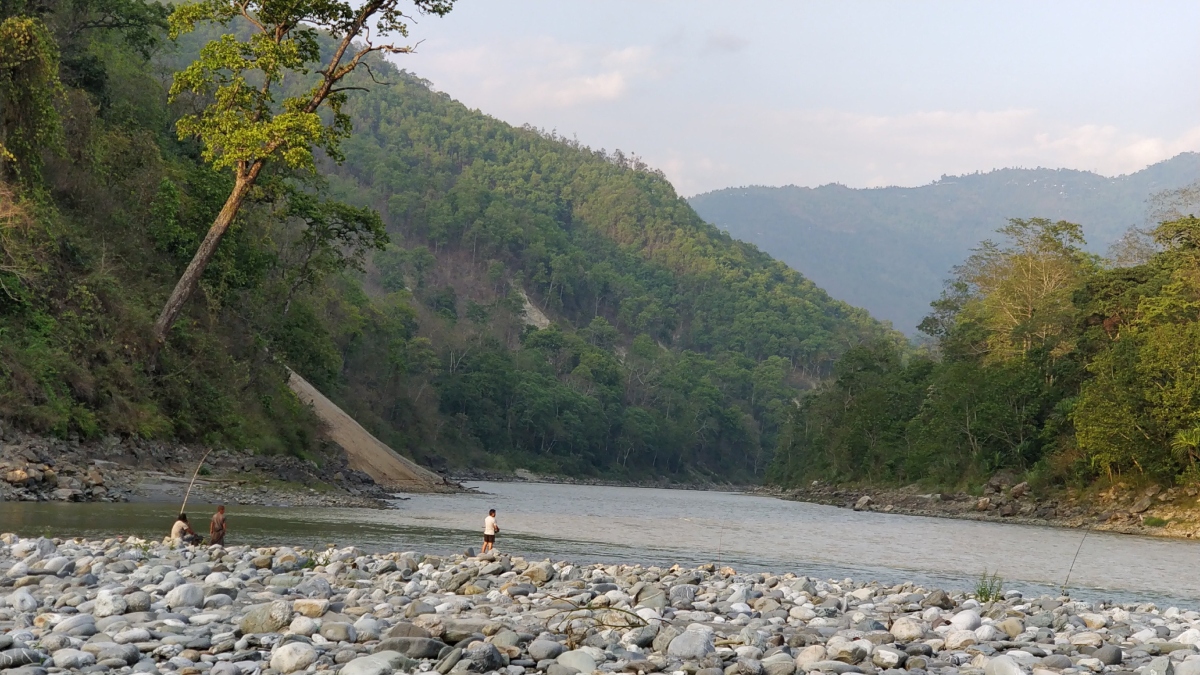EXPLAINED: Why India is upset about China's Teesta River Master Plan for Bangladesh
 Image of River Teesta used for representation | X
Image of River Teesta used for representation | X
New Delhi was on high alert on October 19 as hundreds of students gathered at Bangladesh's Chittagong University to create a human chain near the Shaheed Minar. Carrying placards and torching mashaal torches, protesters demanded that the Teesta River Master Plan sponsored by China be adopted without delay, a major water scheme which they believe would revolutionise Bangladesh's agrarian landscape.
This protest was not an isolated occurrence. Such sentiments have been echoing across the country, with people's outrage continuing due to Bangladesh's long-standing water-sharing treaty with India. At the core of the controversy is the Teesta River, a 414-kilometre-long transnational watercourse which has transformed from a source of irrigation to a South Asian geopolitical hotspot during recent decades.
Why is the Teesta River important?
The Teesta River has its source at Pauhunri Mountain in the eastern Himalayas and passes through the Indian states of Sikkim and West Bengal before entering the Rangpur division in Bangladesh. Before joining the Bay of Bengal, it meets the Jamuna, a distributary of the Brahmaputra.
Both nations use the Teesta for irrigation and agriculture. In Bangladesh, millions of farmers across six northern districts, which have been struck seriously by water shortages for crops, need the river. The country loses approximately 1.5 million tonnes of rice annually due to Teesta's poor dry-season water yield, according to the International Food Policy Research Institute.
Within India, especially in the state of West Bengal, the river is essential for irrigation purposes and power generation through hydroelectric means and has infrastructure such as the Gazoldoba Barrage serving as an important key to controlling the flow of water.
A long-lasting dispute
There are 54 rivers that flow into Bangladesh originating from India, but the management of the Teesta River has long been a source of conflict.
A provisional water-sharing agreement in 1983 had given 39% of the water of Teesta to India and 36% to Bangladesh but it failed to materialise. Diplomatic efforts to reach an agreement gave some hope in 2011 when both nations almost signed an agreement to supply 37.5% of the dry-season flow to Bangladesh.
Yet the agreement collapsed due to opposition from West Bengal Chief Minister Mamata Banerjee on the grounds that the deal would hurt farmers in her state. Since then, talks have hit rock bottom.
With accusations of New Delhi being passive, an impression started making its way in Dhaka regarding India that the country is not interested or not capable of addressing important issues, even though it has logistical and strategic advantages in Bangladesh.
Why is Bangladesh heading for China?
With rising popular pressure and lack of progress with India, Bangladesh has started looking towards China for assistance on the Teesta.
Bangladesh's chief advisor Muhammad Yunus met Beijing in March 2025, where he praised China as a "master of water management" and received a 50-year master plan for the rivers with an emphasis on the Teesta.
China committed 2.1 billion dollars worth of loans, grants, and investments as it became the major development partner. The joint press release of both countries reasserted that Bangladesh invited Chinese companies to join the Teesta River Comprehensive Management and Restoration Project (TRCMRP), reservoir development, riverbed deepening, roads, and satellite cities.
Both countries also committed themselves to an exchange of hydrological information of the Yarlung Zanbo-Jamuna River, which made New Delhi concerned that Chinese control over water resources could affect water flows downstream in the region.
Moreover, China is investing in Bangladesh's Mongla Port, Chattogram Economic Zone, and industrial fields like textiles, clean energy, and digital economy, thereby enabling cooperation for China's Belt and Road Initiative.
The risk for India
For India, this is not just a water concern because it involves geopolitical encirclement.
The proposed Teesta project is located close to the Siliguri Corridor, also referred to as the Chicken's Neck, which is a thin piece of land measuring approximately 60 km in length and 22 km in width. It connects mainland India to the northeastern states. This makes New Delhi regard the strategic presence of any foreign power in proximity to the corridor as a security risk.
The Lalmonirhat airbase, an inactive World War II airbase located in the north of Bangladesh close to the Teesta project site, has experienced increased activity. While the Bangladesh Army has denied Chinese presence, strategic affairs analyst Brahma Chellaney warns that if China achieves operational access near the location, it would compromise India's national security by monitoring critical infrastructure and military movement.
Moreover, there is already a Chinese mega dam project underway in the upper reaches of the Brahmaputra (Yarlung Tsangpo in Tibet), for which precautions have been taken by the Indian government.
The internal politics in Bangladesh
The timing of the Teesta protest is not surprising since Bangladesh is approaching its general elections. The Bangladesh Nationalist Party, the country's prime opposition force, is expected to capitalise on the Teesta dispute. The Awami League has been accused of pandering to India's interests.
The urgency of the Teesta is also sparked by the 1996 Ganga Water Treaty between India and Bangladesh, as its tenure is set to lapse in 2026.
World